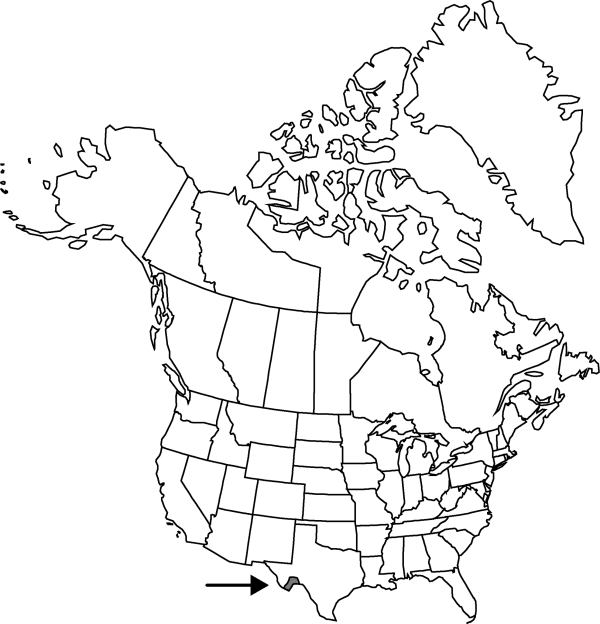Opuntia ×spinosibacca
Amer. Midl. Naturalist 55: 246, fig. 22. 1956.
Shrubs or small trees, erect, to 1.5 m. Stem segments not easily detached, green, often purple near areoles, flattened, obovate to ovate, 10–25 × 7.5–11 cm, ± tuberculate, glabrous, glaucous; areoles 4–5 per diagonal row across midstem segment, subcircular to oblong, 5–6 mm diam.; wool tan, aging blackish. Spines 1–5(–8) per areole, at most areoles, spreading, white with red base, becoming dark red-brown with pale tips, aging gray, stout, usually curved, elliptic in cross section, longest to 70 mm. Glochids closely spaced in crescent at adaxial edge of areole, along margins of areoles, and in subapical tuft, yellow, to 4 mm. Flowers: inner tepals deep yellow with red basal portions, to 35 mm; filaments yellow; anthers pale yellow; style cream; stigma lobes yellow-green. Fruits often sterile, sometimes proliferating, yellow to red, ovoid to obconic, 28–32 × 13–22 mm, usually fleshy, becoming dry, tuberculate, glabrous; areoles 20–30, distal areoles bearing 1–4 red-brown and white spines, to 25 mm. Seeds few, tan, subcircular to irregularly shaped, 4–5 mm diam.; girdle protruding to 1 mm. 2n = 44.
Phenology: Flowering spring (Apr–May).
Habitat: Limestone hills, slopes
Elevation: 900 m
Discussion
Opuntia ×spinosibacca apparently originated from hybridization between the dry-fruited, diploid O. aureispina and the fleshy-fruited, hexaploid O. phaeacantha (or O. camanchica Engelmann & J. M. Bigelow). The nothospecies is restricted to the vicinity of Big Bend National Park, Texas. A very similar hybrid, O. ×rooneyi M. P. Griffith (O. aureispina × O. macrocentra, both diploids) is known fom the same region. The hybrids differ in spine number and distribution. Opuntia ×rooneyi has 2–3 central spines to 40–50 mm and 1–4 radial spines to 20 mm, the spines concentrated in the distal 2/3 of the stem segments. Opuntia ×spinosibacca has 2–5 central spines to 70 mm and 0 radial spines, the spines in nearly all areoles of the stem segments.
Selected References
None.
